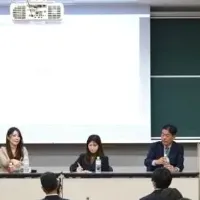
Innovative Hybrid Model Enhances Metal Wear Predictions for Automotive and Aerospace Applications
Enhancing Safety in Lightweight Vehicles: A Breakthrough in Metal Wear Prediction
In recent advancements from Pusan National University, a team of researchers has introduced a revolutionary hybrid model designed to anticipate the fatigue life of magnesium alloys—vital materials in the construction of lightweight cars and aircraft. This innovative approach combines the principles of machine learning with traditional physics to provide unprecedented accuracy in predicting when structural fatigue may lead to failure.
The Need for Accurate Fatigue Predictions
As the automotive and aerospace industries increasingly turn towards lighter materials to improve fuel efficiency and reduce emissions, magnesium alloys have gained popularity due to their remarkable strength-to-weight ratio. However, one of the significant challenges engineers face is predicting how these alloys will react under various stress conditions, especially since they can develop microscopic cracks over time due to repeated stress.
Traditional methods of predicting fatigue life often rely on empirical models that require frequent adjustments based on changing loading conditions—making them cumbersome and impractical for industrial applications. This has been a barrier for engineers striving to ensure safety and performance in their designs.
The Hybrid Model Approach
Under the leadership of Professor Taekyung Lee and PhD candidate Jinyeong Yu, the team embarked on developing a more reliable method by merging machine learning with an energy-based physical model. Their study, published in the Journal of Magnesium Alloys, outlines how they created a model that accurately analyzes the fatigue life of magnesium alloys without the need for constant manual adjustments.
The model utilizes a neural network capable of recognizing complex stress and strain cycles through a large dataset gathered from low-cycle fatigue tests on AZ31 magnesium alloy. By analyzing the hysteresis loops—which depict the alloy's stress-strain behavior during loading and unloading—the neural network can effectively learn the material's response patterns.
In turn, this machine learning component collaborates with a physics-based framework that grounds the findings in the inherent material behaviors defined by physical laws. This collaboration provides a comprehensive understanding of how the alloy behaves under cyclic loading and offers reliable predictions about when cracks are likely to initiate.
A Unique Predictive Capability
Instead of directly predicting the fatigue life, the model focuses on estimating the hysteresis loops corresponding to various conditions. By doing so, researchers can gain insights into how energy is dissipated during cycles, which is essential for calculating fatigue accumulation rates. Ultimately, this data is transformed into a reliable estimate of the number of cycles to failure.
The adaptive capacity of the machine learning component means that the model improves its predictions as it receives new data, allowing it to adapt across different loading scenarios without needing manual recalibration.
Implications for the Industry
The implications of this research are significant. As manufacturers adopt this new predictive model, they can achieve greater reliability in working with magnesium alloys. This could lead to the development of safer, lighter, and more cost-effective designs in industries where material integrity is crucial, such as automotive and aerospace sectors. Moreover, by enhancing predictive accuracy, the risk of failure in critical components can be significantly reduced, ultimately improving safety for end-users.
Conclusion
In summary, the groundbreaking research conducted at Pusan National University not only illustrates the potential of combining machine learning with traditional modeling methods but also sets a pivotal precedent for the future of material science in high-stakes applications. As this hybrid model gains traction in the industry, it promises to redefine standards for safety, efficiency, and sustainability in vehicle and aircraft design, showcasing the crucial interplay between innovative technology and engineering practices.
For further details, you can access the original study titled Alternative predictive approach for low-cycle fatigue life based on machine learning and energy-based modeling in the Journal of Magnesium Alloys.
Topics Other)










【About Using Articles】
You can freely use the title and article content by linking to the page where the article is posted.
※ Images cannot be used.
【About Links】
Links are free to use.